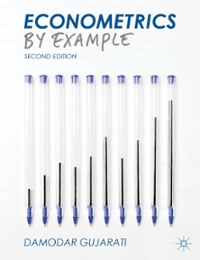Note: The following question comes from Chapter 1 of the course textbook, Economics and Financial Management for Nurses and Nurse Leaders (3rd ed., 2017), by S. J. Penner and are edited for formatting. Healthcare markets are perfectly competitive markets. O True O False QUESTION 2 True or False: While total healthcare costs can vary across a region of the U.S., the reasons they vary are the same for all regions. O True O False QUESTION 3 Note: The following question comes from Chapter 1 of the course textbook, Economics and Financial Management for Nurses and Nurse Leaders (3rd ed., 2017), by 5. J. Penner and are edited for formatting. The price for a good or service falls. What likely happens to the quantity supplied? O A. Increases O B. Levels off O C. Decreases O D. All of the above O E. None of the above QUESTION 4 The Total Cost of Care Index benefits which of the following categories? O A. Healthcare providers and employers O B. Policymakers and health plans O C. Consumers O D. All of these O E. None of theseQUESTION 9 Note: The following question comes from Chapter 1 of the course textbook, Economics and Financial Management for Nurses and Nurse Leaders (3rd ed., 2017), by S.J. Penner and are edited for formatting. Concerns about healthcare costs arose: O A. Soon after the passage of Medicare and Medicaid O B. As a result of World War II shortages O C. When U.S. healthcare costs surpassed 159% of GDP O D. All of the above O E. None of the above QUESTION 10 Note: The following question comes from Chapter 1 of the course textbook, Economics and Financial Management for Nurses and Nurse Leaders (3rd ed., 2017), by S.J. Penner and are edited for formatting. One reason healthcare markets are not competitive is: O A. There are often no suitable substitutes. O B. No one can enter or leave a healthcare market. O C. The prices for medical care are too high. O D. All of the above O E. None of the aboveNote: The following question comes from Chapter 1 of the course textbook, Economics and Financial Management for Nurses and Nurse Leaders (3rd ed., 2017), by S. J. Penner and are edited for formatting. Two influences that increase the quantity of healthcare demanded include: O A. Income and insurance O B. Hospital revenue and transparency O C. Market power and market failure O D. All of the above O E. None of the above QUESTION 6 The Total Cost of Care Index shows how spending can vary for similar patients. Which of the following are the most impactful cost drivers? O A. Insurance costs and price of services O B. Price for services and utilization of service O C. Utilization of services and insurance costs O D. All of these O E. None of these QUESTION 7 Note: The following question is based on National Health Expenditure Projections, 2017-2026: Despite Uncertainty, Fundamentals Primarily Drive Spending Growth (Cuckler et al., 2018), which can be found in the course Learning Resources. The national health expenditure is expected to grow annually, on average, until 2026 by: O A. 3.096-4.09% O B. 4.096-5.09% O C. 5.096- 6.096 O D. 6.096-7.096 O E. Cannot be predicted QUESTION 8 Note: The following question is based on National Health Expenditure Projections, 2017-2026: Despite Uncertainty, Fundamentals Primarily Drive Spending Growth (Cuckler et al., 2018), which can be found in the course Learning Resources. Spending for Medicare is projected to grow the least among the three major payors: private health insurance, Medicare, and Medicaid. O True O False









